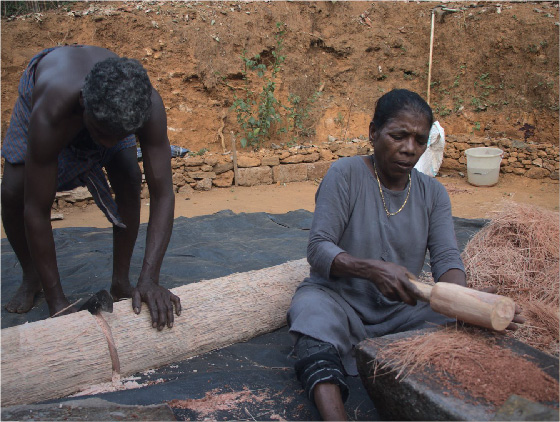


Of Ancient foods and Wild trails
Chandrika has her home in the Sholayar forests, several miles upstream Athirappilly. One evening we got carried away by her spirit, simply following her footsteps in the wild, looking for herbs, roots and locating trees with bee hives. That evening we witnessed the extraction and processing of Palm Sago, a rare forgotten wild. Chandrika’s brother had selected a dying palm from a steep rock face, a tree that he knew an elephant wouldn’t be able to reach. Bringing the tree down, stripping its thick bark and lopping its trunk for the pith to be then readied is a laborious process. Not one that even those of us who appreciate ‘slow food’ can imagine.
Chandrika’s animated story telling continued while she beat the pith using a mallet. The fibrous strands (vaguely resembling coconut husk in texture) go through a wet filtering process before the fine peach colour flour is found in the sediment. This, once sun-dried, can be stored for almost a year, to be made into roti-like preparations or the occasional dessert.
We get a glimpse of how things were in the past. Foraged foods sustained forest people – several kinds of tubers, greens, fish, wild meat. Flour of Queen sago and East Indian Arrowroot which would last them through several months. Palm pith flour was also one such staple food option, but would always be brought from rock faces where elephants did not have access. For the Kadar are well aware that palm trees are a favourite of elephants.